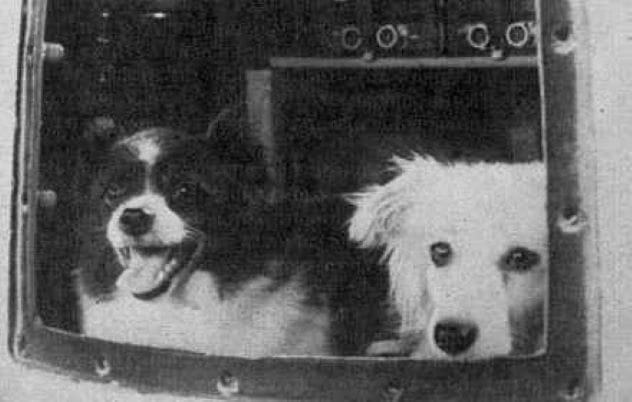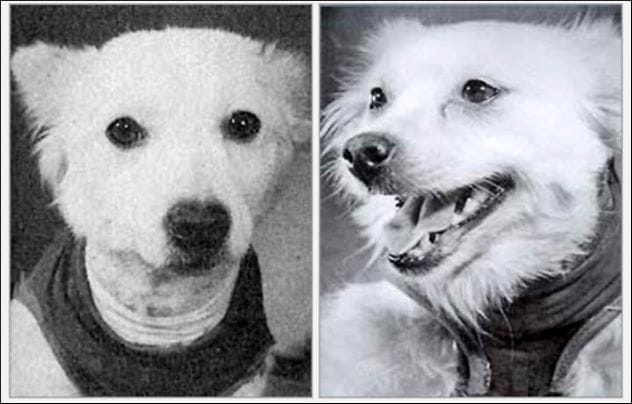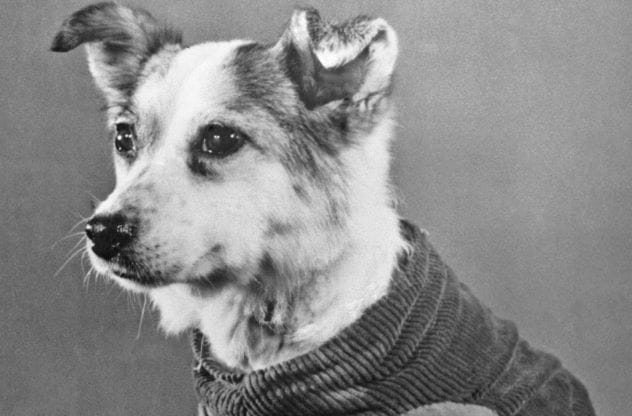Before humans dared to venture into the vast unknown of space, a brave group of four-legged pioneers took the first giant leaps for canine-kind. While the U.S. space program famously used chimpanzees, the Soviet Union turned to stray dogs, believing them to be resourceful and resilient. These weren’t just test subjects; they were explorers, each with a unique story. Over 15 years, around 36 dogs were part of this incredible journey, many of whom faced perilous missions. Let’s remember 10 of these courageous Soviet space dogs whose stories are both amazing and, at times, truly heartbreaking.
Dezik, Tsygan, and Lisa: The Trailblazers
Imagine the uncertainty of the 1950s. Could life even survive in space? Was a safe return possible? Dezik and Tsygan were the first Soviet dogs to find out. On August 15, 1951, they soared 68 miles high and, amazingly, returned unharmed. This success spurred more missions. Dezik was sent up again, this time with a new companion, Lisa. Tragically, this second flight ended in disaster when their module crashed, and both dogs perished. To avoid losing both pioneering space dogs, Tsygan was quickly retired and found a loving home with a Soviet physicist.
Bolik and ZIB: The Unlikely Understudy
The Soviet space program often recruited stray dogs from Moscow’s streets. These dogs underwent rigorous training: enduring centrifuges to simulate high speeds and progressively smaller cages to acclimate them to cramped conditions. Bolik was scheduled for a flight just a month after Dezik and Lisa’s tragic mission. However, the stress was too much, and Bolik escaped days before launch. With equipment tailored to Bolik’s size, scientists were in a bind. Fate intervened when they found another stray wandering near the compound. This untrained dog, perfectly sized, was named ZIB – an acronym for “Replacement for Missing Bolik.” In an unexpected turn, ZIB’s mission was a success, and this unsuspecting stand-in returned safely.
Laika: The First Orbital Hero
On November 3, 1957, Laika (meaning “Barker”) made history aboard Sputnik 2, becoming the first living creature to orbit the Earth. The mission was rushed to coincide with the 40th anniversary of the Russian Revolution, leaving no time to design a return mechanism. Everyone knew Laika wouldn’t come back. The official story was that she would die painlessly from lack of oxygen after seven days. However, the truth, revealed later, was much sadder. Laika perished just hours into the flight due to overheating inside the capsule during launch. Despite her tragic end, Laika became a global icon, a symbol of sacrifice in the name of exploration. Monuments and museum exhibits honor her memory to this day.
Bars and Lisichka: A Favorite Lost

The loss of Laika deeply affected the Soviet space team. They were determined to improve their spacecraft to ensure future missions could return safely. Bars (“Panther”) and Lisichka (“Little Fox”) were chosen for a test flight in the summer of 1960. Lisichka was a particular favorite of Sergei Korolev, the chief rocket engineer. Despite improvements and careful preparation, their mission ended in swift tragedy. Just 28 seconds after launch, the capsule exploded, killing both dogs. It was a stark reminder of the immense challenges and dangers involved in early space exploration.
Belka and Strelka: The Triumphant Return
Three years after Laika, the goal was clear: send living beings into orbit and bring them back alive. Belka (“Whitey”) and Strelka (“Little Arrow”) were the chosen pair. On August 19, 1960, they launched aboard Sputnik 5, accompanied by a diverse crew of 40 mice, 2 rats, a rabbit, fruit flies, and plants. After 17 orbits, they returned to Earth completely unharmed. This monumental success made headlines worldwide, marking them as the first living creatures to orbit the Earth and return safely. Both dogs became celebrities, retired from spaceflight, and Strelka later had puppies. One of her pups, Pushinka, was even gifted to U.S. First Lady Jackie Kennedy, a small symbol of connection during the Cold War.
Pchelka and Mushka: Secret Sacrifice
Secrecy was paramount during the space race. This was evident in the mission of Pchelka (“Little Bee”) and Mushka (“Little Fly”) in December 1960. Mushka had previously served as a control dog on Earth during Laika’s mission. After a successful launch and a day in orbit, disaster struck during reentry. The rockets failed to shut off as planned, causing the capsule to veer off course. Fearing the spacecraft might fall into foreign hands, the Soviet team made the difficult decision to activate the self-destruct mechanism, killing both Pchelka and Mushka. Their success in orbit was overshadowed by the need to protect national secrets.
Shutka and Kometka: The Miraculous Survivors

The very next mission, on December 22, 1960, was another harrowing experience. Shutka (“Joke”) and Kometka (“Little Comet”), along with some mice, were meant for an orbital flight. However, the upper-stage rocket failed, and the capsule only reached 133 miles. Ejection seats failed to deploy, trapping the dogs. The self-destruct command also malfunctioned. The capsule crashed 2,175 miles away in Siberia, in freezing -42°C temperatures. Scientists rushed to the site but couldn’t disarm a backup self-destruct timer in the dark and cold, fearing the worst. But as dawn broke, they heard barking! Miraculously, Shutka and Kometka were alive, though in shock. Both recovered, but their incredible survival story was kept quiet. Kometka was later adopted by Oleg Gazenko, a lead scientist on the dog missions, and lived a long, peaceful life.
Chernushka: Paving the Way for Humans
As technology improved, the focus shifted slightly. The Soviets began using single dogs for missions, a subtle hint that human spaceflight was getting closer. Before sending a person, they needed to ensure a craft large enough for a human could safely orbit and return. Chernushka (“Blackie”) was part of this crucial testing phase. In March 1961, she completed one orbit accompanied by a test dummy and returned safely. Her successful mission was a vital step, significantly boosting confidence and accelerating plans for the first human spaceflight just a month later.
Zvezdochka: The Little Star’s Final Test

The flight of Zvezdochka (“Little Star” or “Starlet”) was the ultimate dress rehearsal before Yuri Gagarin’s historic mission. A failure here would delay or even jeopardize Gagarin’s flight. The dog, originally named Udacha (“Luck”), underwent the standard training. However, Gagarin, known for his superstitions (many of which Russian cosmonauts still observe), insisted on a name change. The team agreed, and Udacha became Zvezdochka. Whether it was luck or science, her mission was a resounding success. Zvezdochka orbited the Earth and returned unharmed, giving the green light for Gagarin to make his pioneering journey into space.
Veterok and Ugolyok: The Endurance Champions
After Yuri Gagarin’s flight, the space race wasn’t over. The U.S. set its sights on the moon, a journey requiring much longer stays in space than previously attempted. The record for continuous time in space without fatality was then only five days. To push these limits, Veterok (“Little Wind”) and Ugolyok (“Little Coal”) were selected for what would be the final dog space mission in 1966. They were launched in a new craft and spent an astonishing 21 days in orbit before returning safely to Earth. They became television stars for a while, then lived out long, ordinary lives. Ugolyok even had a litter of six puppies, and Veterok was adopted by a scientist from the spaceflight team.
These ten stories represent just a fraction of the canine cosmonauts who played a crucial role in humanity’s journey to the stars. Their bravery, unwitting sacrifices, and sometimes surprising tales of survival remind us of the diverse contributions made in the quest for space exploration.
What are your thoughts on these incredible space dogs? Share your reflections in the comments below!










